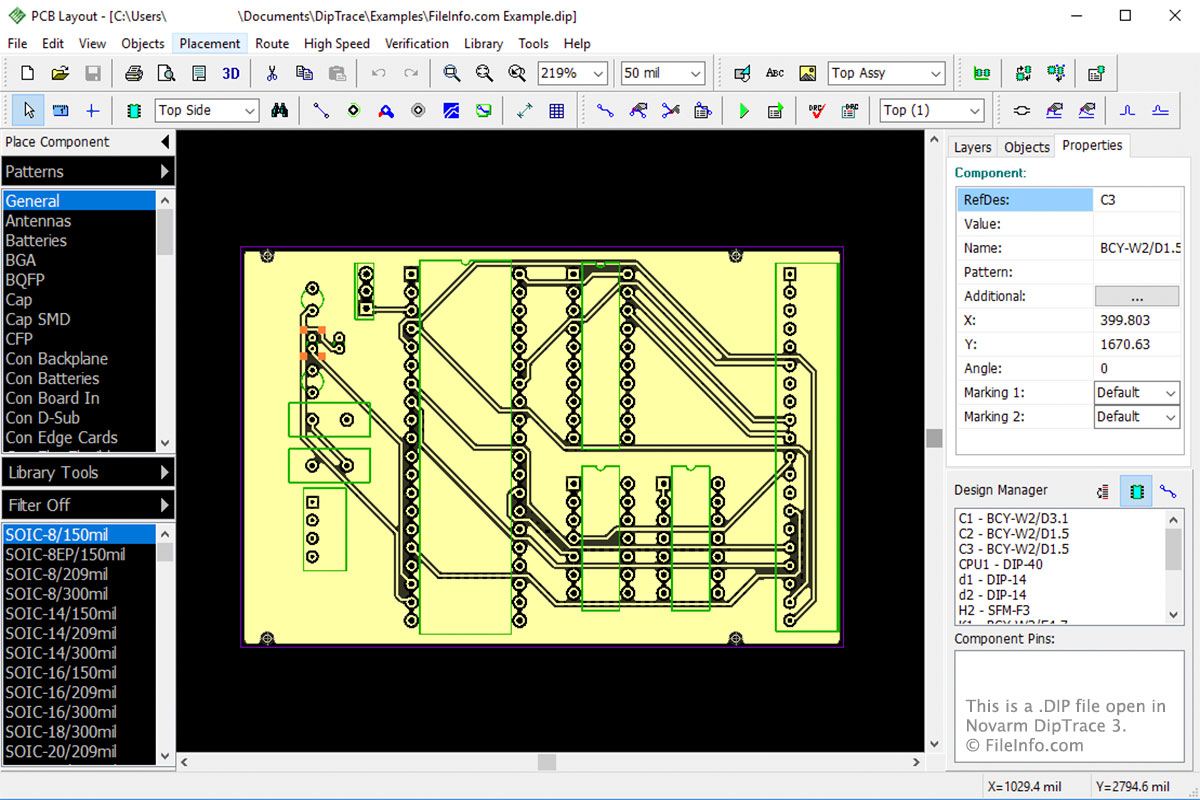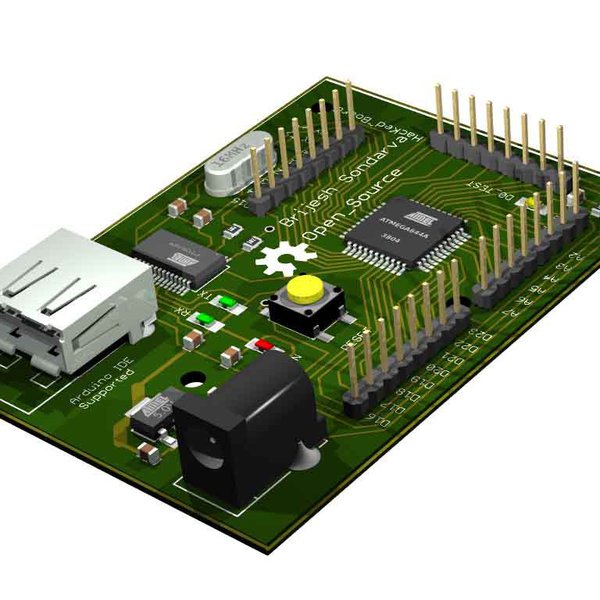

Note that DipTrace works from the centre of each pin as the origin. In this example, we can see that our rows of pins need to be 7.5mm apart (the E1 value in this diagram)ĭouble-click each pin to amend it's height/width and X/Y values. Paste a new row of pins and draw a rectangle between them (this will form the silkscreen layer later, showing where and how the IC chip should be placed on the board)Ĭheck out the component datasheet to find out pin sizes and spacings. You should see a row of 14 pins- select them all and right click to copy We changed the pad type to rectangle, set the hole size to zero and the pad type from "through-hole" to "surface". Select all the pins then right click on one of them to edit the propertiesĬhanging the X and Y values affects only the first pin selected, but changing the height and width of the pin(s) affect all selected pins.ĭepending on how your environment is set up, the pads may not be the correct type at this stage. As you drag your mouse, it tells you how many pins it has put down DipTrace includes an "add-row-of-pins" option. We've used IC so that when a PIC 18F2455 is added to our designs, it will automatically be labelled IC1, IC2 etc.įor this part, we're drawing a 28-pin SOIC chip (SMT version of the 18F2455) which consists of 2 rows of 14 pins.

RefDes is what is used every time a new instance of this component is added to your PCB. Create a new library (or open an existing custom library if you're adding to one you've already started) and from the select įill in the name and RefDes values.

Start the DIPTrace pattern editor application. Here's a quick overview of how to do this using DipTrace: Whenever we've made a PCB we've always had to create a library of custom layouts - even when the PCB software includes libraries of common components from a variety of different manufacturers.īecause we're getting to like DipTrace very quickly and plan to use it for all our PCB work in the immediate future, the first thing we need to do is re-create our library of custom layouts.

This is because most PCB packages use "standard" pins and pad sizes, which - while fine for mechanised pick-and-place and SMT soldering machines - can be a nightmare to solder by hand. Whenever we design and layout PCBs for homebrew manufacture, there always comes a time when we have to undo a great deal of work, and amend the footprints or patterns for the components on the PCB layout.


 0 kommentar(er)
0 kommentar(er)
